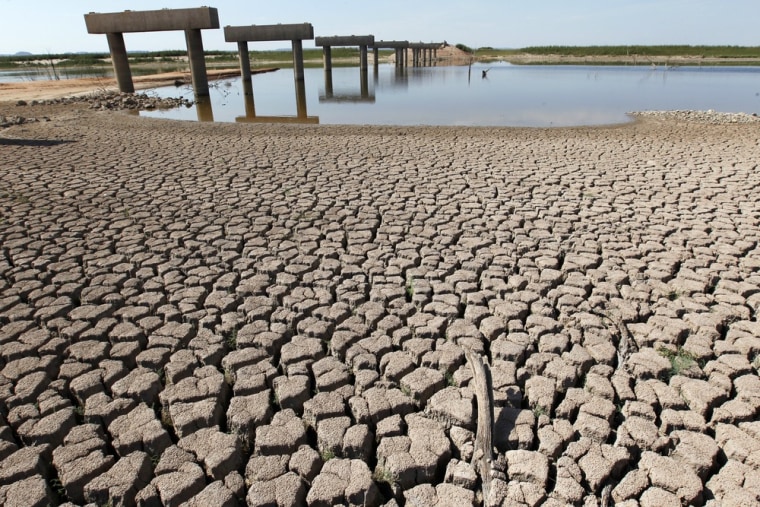From nesting grounds in Alaska and Idaho to the prairie potholes in Canada, thousands of sandhill cranes, snow geese and other migratory birds are making their way south to their traditional winter watering holes in the American Southwest.
The problem is a year of drought has ravaged wetlands and crops throughout Texas and New Mexico, forcing the birds to fly off course in search of water and food.
In the Texas Panhandle, there's no standing water in any of the playas and officials at Buffalo Lake National Wildlife Refuge haven't seen many birds. It's just as dry at Texas' oldest national refuge in Muleshoe, where 27,000 birds have moved through so far this fall.
"I don't know where our birds are going," said refuge manager Jude Smith. "It's not just the cranes, but the geese and the ducks. They had bumper crop years up in the potholes with lots of reproduction but there's nowhere for them to go."
That's why managers at Bosque del Apache National Wildlife Refuge in south-central New Mexico are bracing for record numbers this fall and winter. With nearly 13,000 acres of wetlands, the refuge is one of the country's most well-known spots for observing migrating waterfowl. Thousands of people were expected to visit this week for the annual Festival of the Cranes.
The shallow ponds at Bosque del Apache and the adjacent Rio Grande shine like beacons as the weary birds look for a place to rest after their long journey.
"The birds will go where the water is first and where the food is second. They'll follow those two all the way south," said Jose Viramontes, a spokesman for the U.S. Fish and Wildlife Service.
Bosque del Apache is managed specifically to provide habitat and protection for migrating birds and other endangered species. When farmers upstream finish irrigating for the season, water from the Rio Grande fills the refuge's impoundments, providing a place where birds can roost overnight without having to worry about coyotes or other predators.
But Bosque del Apache wasn't completely immune from the effects of the drought. This year's corn crop that managers depend on to feed the birds throughout the winter was decimated by a lack of rain.
To keep the birds fed, the refuge plans to spread 500,000 pounds of barley donated by a Colorado brewer.
"If we didn't have that, the birds would go elsewhere, and we know that they're safe here so we prefer to keep them here," said Robyn Harrison, coordinator of the crane festival. "And honestly by the time they get here, they're not interested in flying any further for a while."
It can take up to three days for a crane to recover from its migration, she said.
That gives birdwatchers plenty of opportunities.
The autumn colors of the cottonwoods have already passed their peak, but cloudy skies have made for a week of beautiful sunrises and sunsets at Bosque del Apache.
What makes the refuge so spectacular this time of year are those early mornings. That's when the birds wake up and begin to stretch their wings and legs. A big racket ensues as they all take off in search of breakfast.
The yodeling call of the crane is distinctive and their long wings are captivating, Harrison said.
"Just a slow easy flap and they take off in large Vs. It's just an incredible sight," she said.
Harrison has been organizing the festival for the past four years and it never gets old.
At Bitter Lake National Wildlife Refuge near Roswell, manager Floyd Truetken said twice as many cranes have passed through the Pecos Valley this year and he suspects some of those birds changed course after finding it too dry in Texas.
While late summer rains took the edge off of what has been one of the driest and warmest years on record for New Mexico, Truetken said lake levels at the refuge are still far below normal.
Biologists at refuges around the Southwest have been busy sharing anecdotal evidence of the drought's effects on the birds' flight patterns. However, they will have to wait to model any shifts in the flyway, given that wintering populations usually peak in December and January depending on the species.
